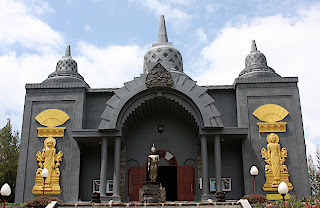Batak alphabet 
Origin
The Batak alphabet, or surat batak, is descended ultimately from the from Brahmi script of ancient India by way of the Pallava and Old Kawi scripts.Notable features
- Batak is a syllabic alphabet - each consonant (aksara) has an inherent vowel. Other vowels or the absence of vowels can be indicated using diacritics which appear above, below or after the consonant letter.
- Batak is traditionally written from bottom to top in vertical columns running from left to right on strips of bamboo held together with string.
Used to write:
The Batak languages of northern Sumatra - Karo Batak, Toba Batak, Dairi Batak, Simalungun/Timur, Angkola and Mandailing Batak, and occasionally Malay. In most Batak communities, only the datu (priests) are able to read and write the Batak alphabet and they use it mainly for calendars and magical texts.There are slight variations in the letters and vowel diacritics used to write each language.
Karo Batak syllabic alphabet
Karo Batak is an Austronesian language with about 600,000 speaks in the central and northern part of the Indonesian island of Sumatra.
Vowel diacritics with ka

Toba Batak syllabic alphabet
Dairi Batak, which is also known as Batak Toba and Batta, is an Austronesian language spoken by about 2 million people in the northern part of the Indonesian island of Sumatra.
Vowel diacritics with ka

Dairi Batak syllabic alphabet
Dairi Batak, which is also known as Dairi, Pakpak and Pakpak Dairi, is an Austronesian language with about 1.2 million speakers in the northern part of the Indonesian island of Sumatra.
Vowel diacritics with ka

Simalungun/Timur syllabic alphabet
Simalungun, which is also known as Timur and Simelungan, is an Austronesian language spoken by about 800,000 people in the northern part of the Indonesian island of Sumatra.
Vowel diacritics with ka

Mandaling Batak syllabic alphabet
Mandaling Batak or Batta is an Austronesian language with about 400,000 speakers in the northern part of the Indonesian island of Sumatra.






































